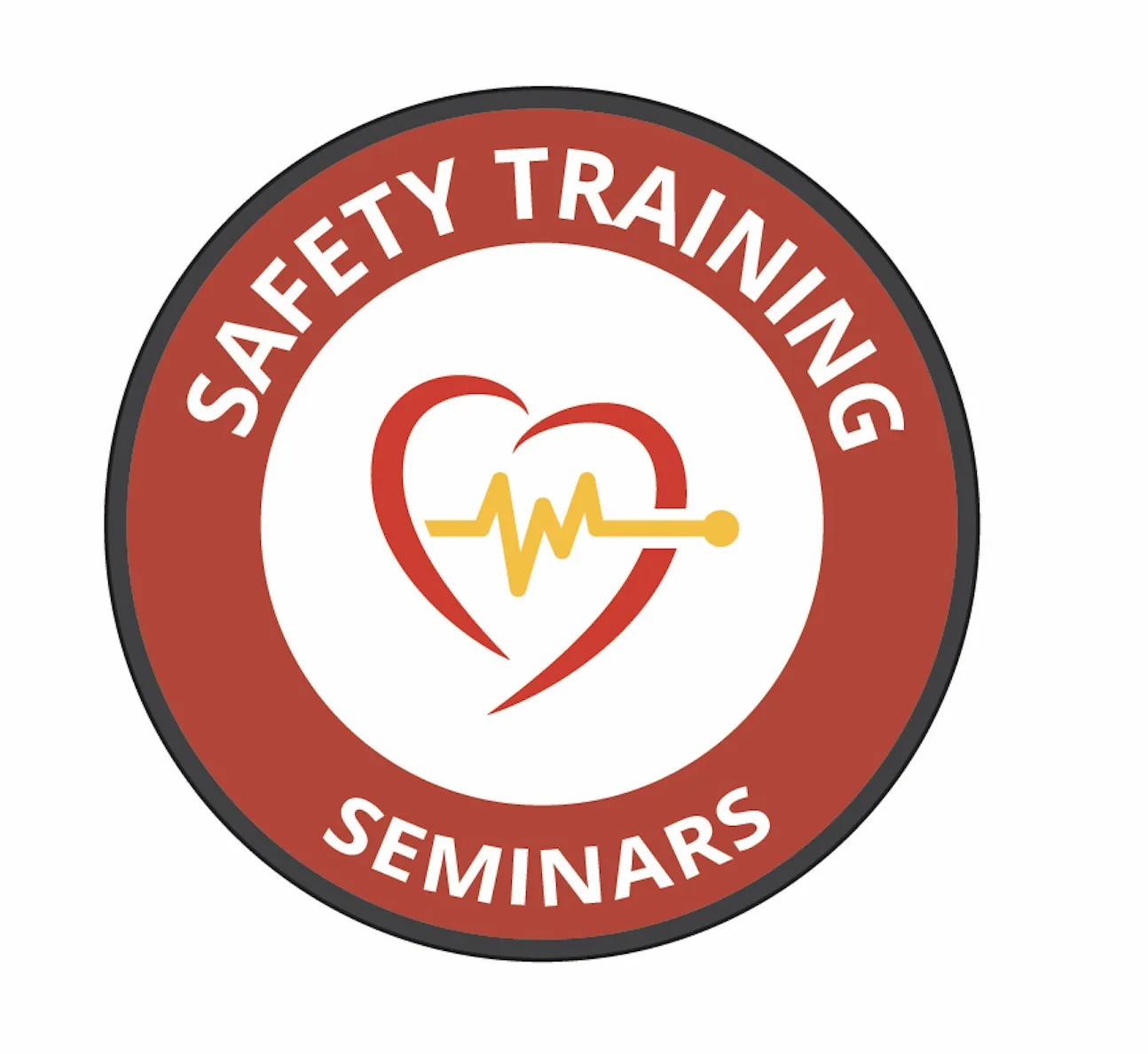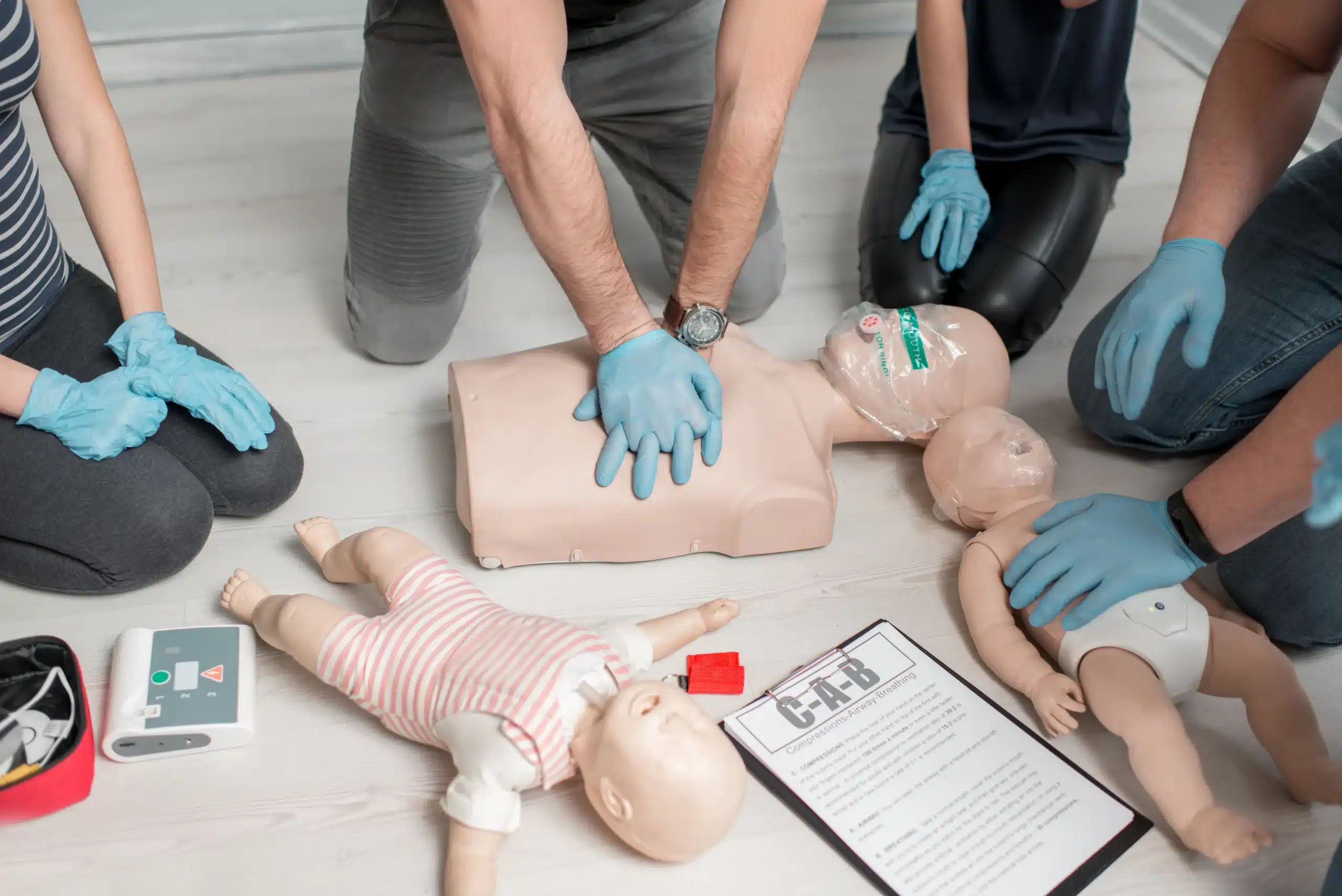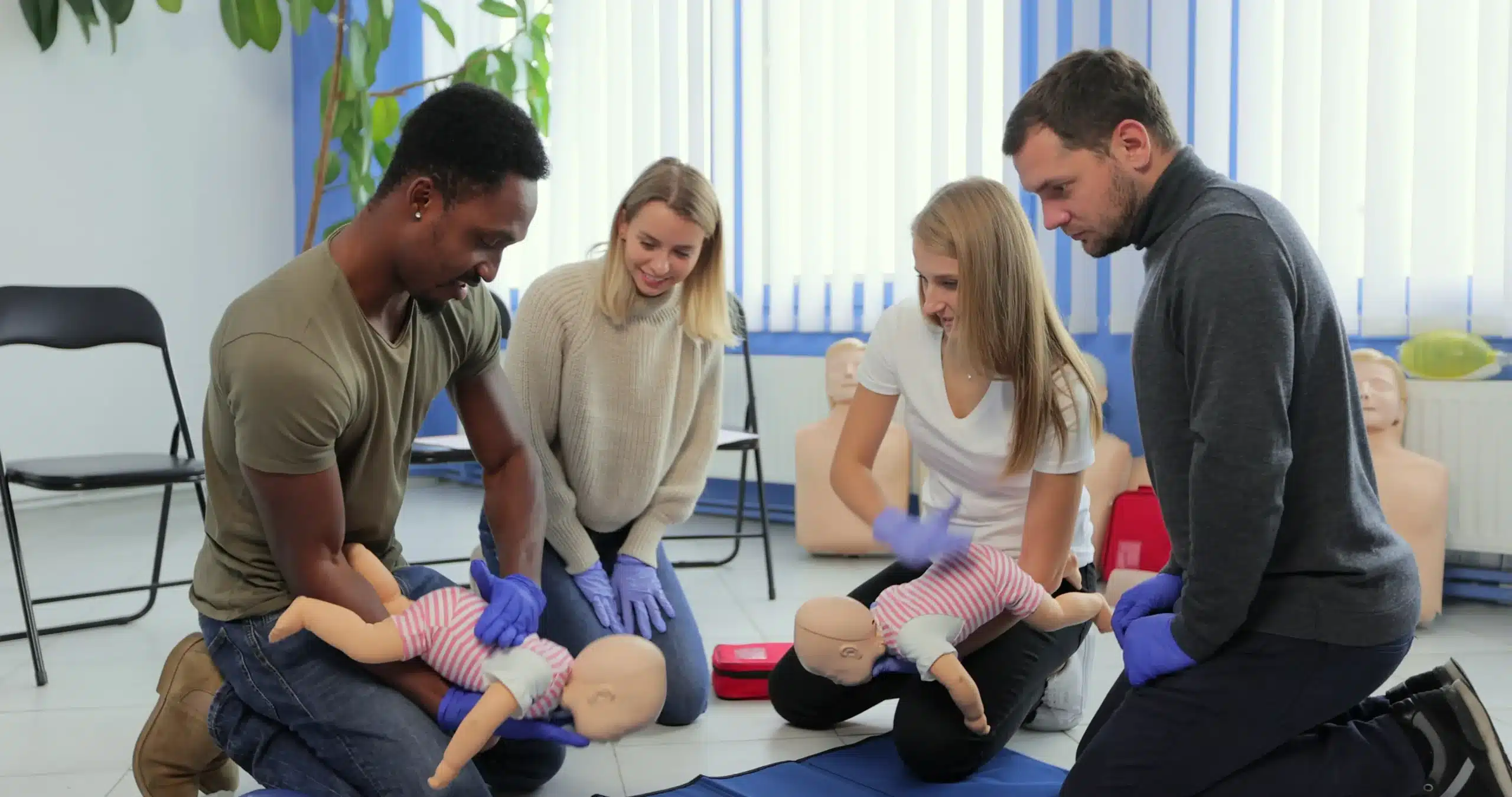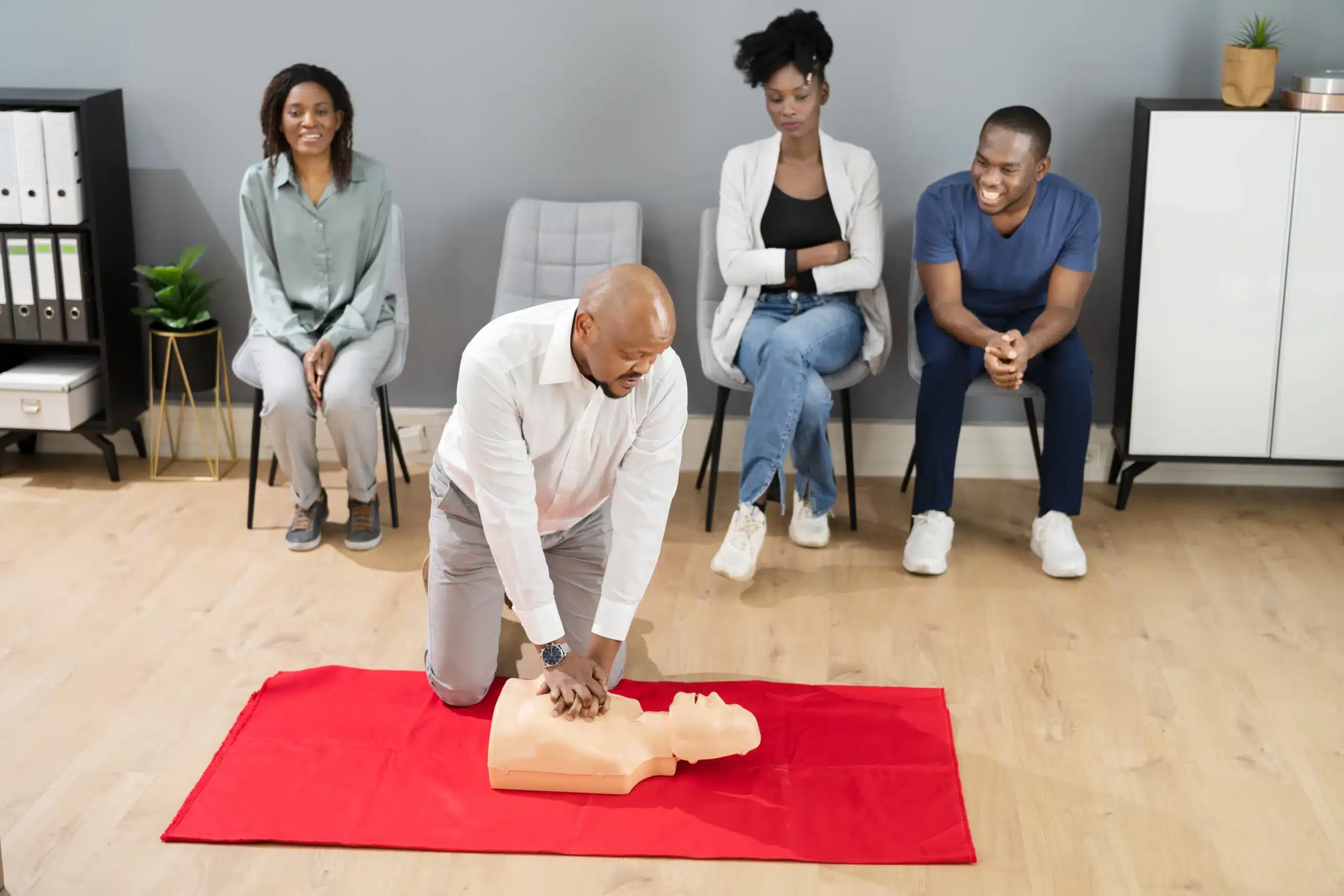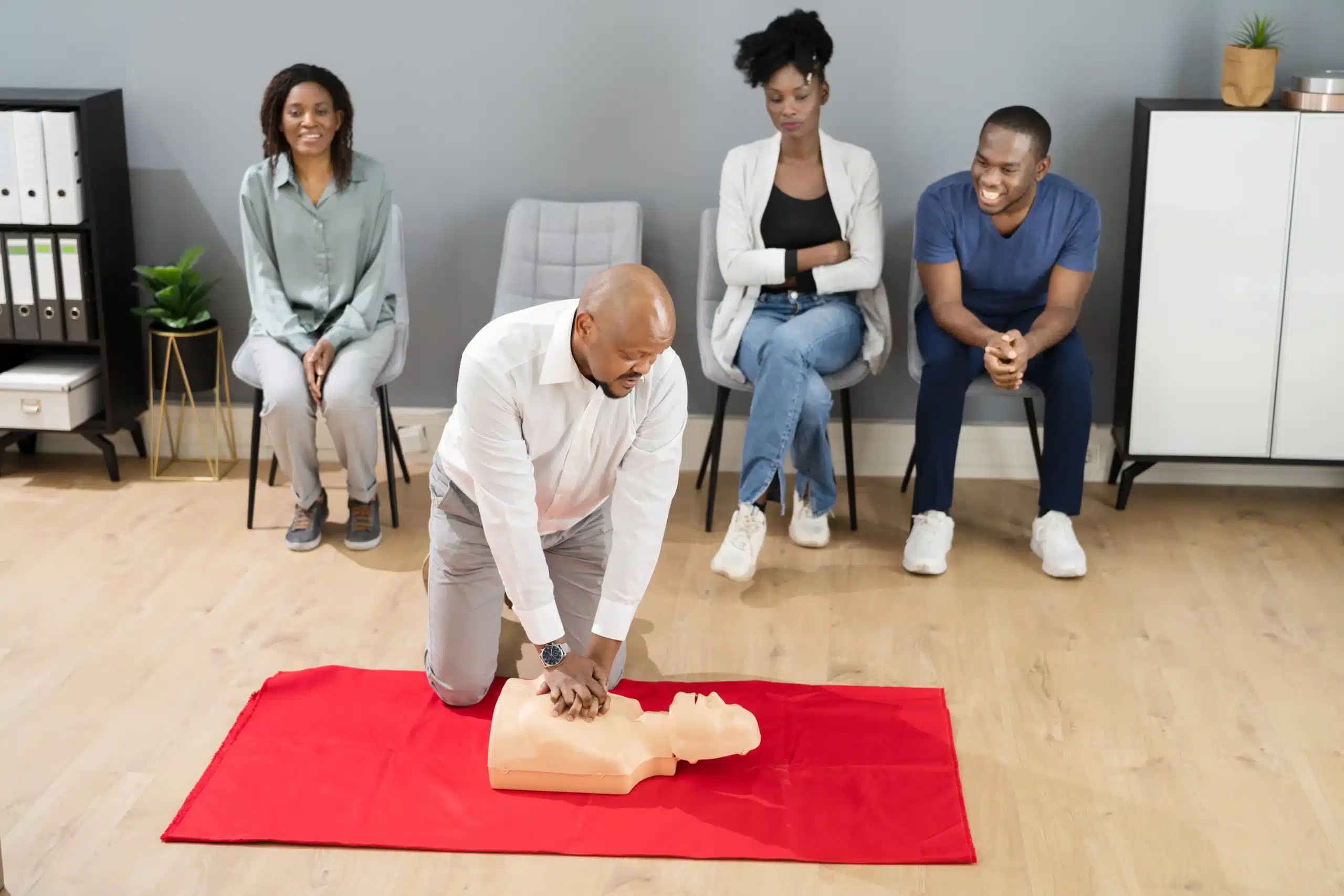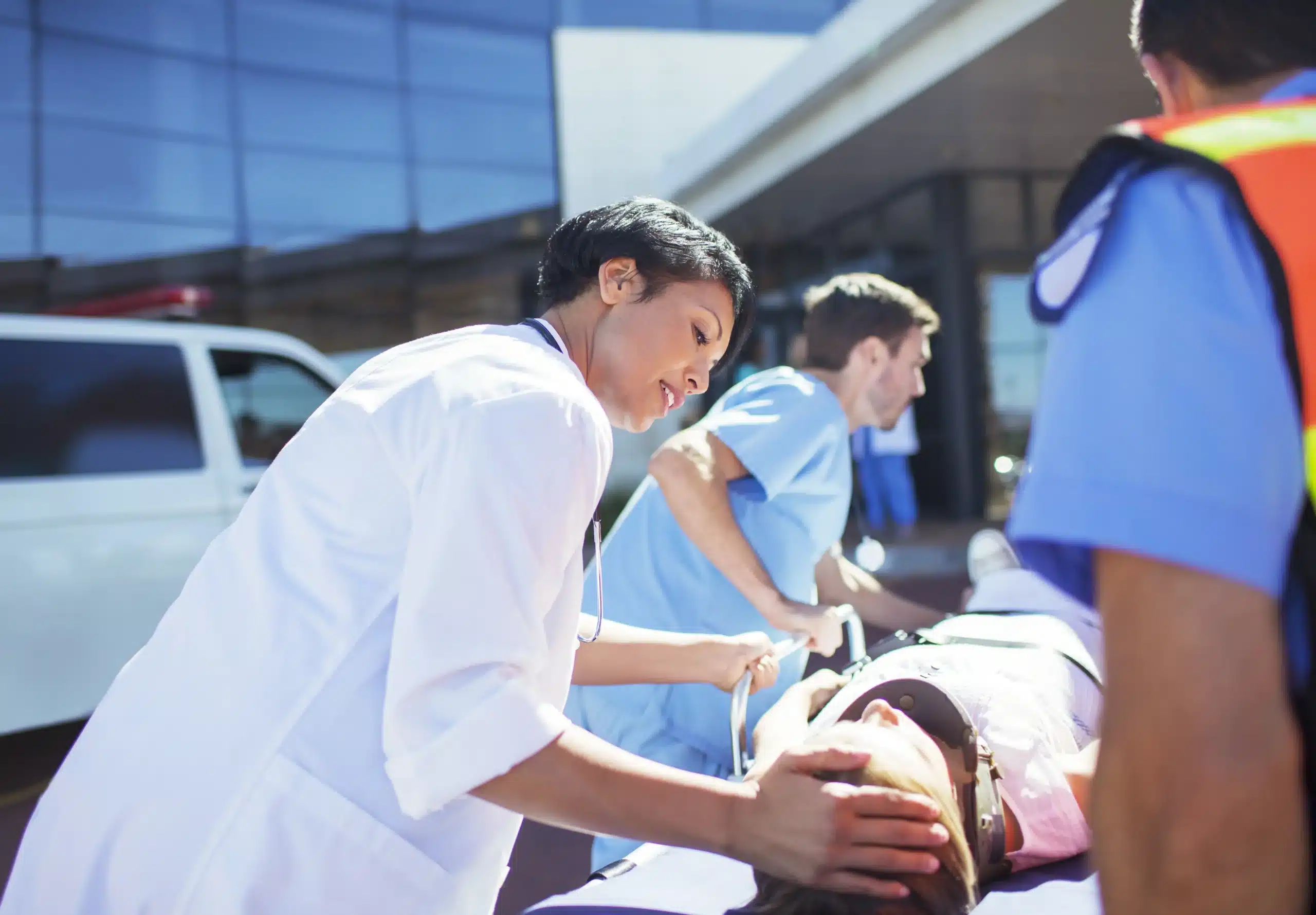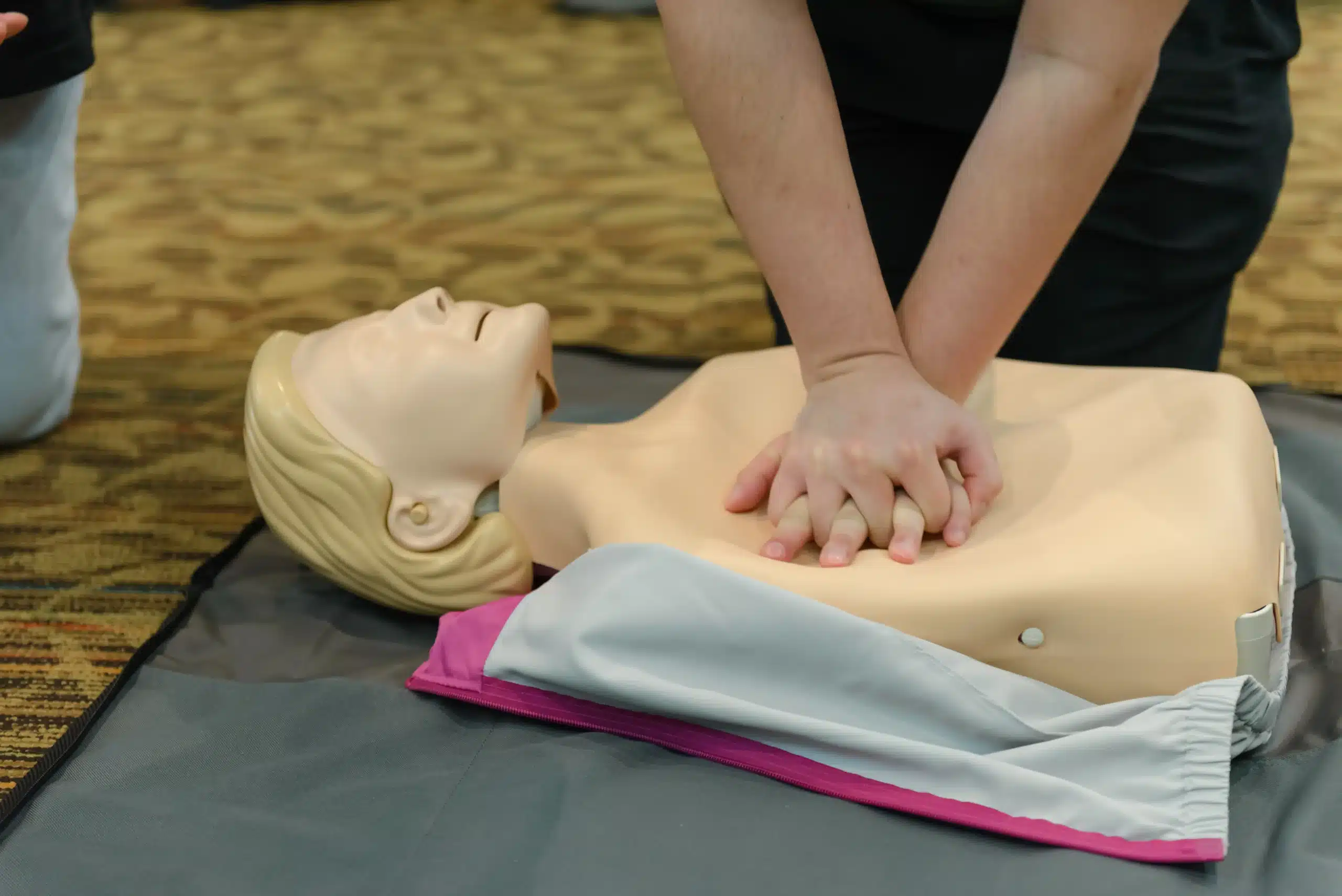Emergencies can happen anytime, anywhere. Would you know what to do if someone near you suddenly collapsed? BLS training empowers you to act quickly and confidently in such critical situations. This guide is your roadmap to understanding and finding the right “bls training near me.” We’ll cover the essential skills taught in BLS courses, debunk common myths, and guide you through the process of selecting a reputable training provider. From understanding the importance of high-quality CPR to navigating the different course formats available, we’ll equip you with the knowledge to make informed decisions about your BLS training journey.
Key Takeaways
- BLS skills empower anyone to save lives: From CPR and AED use to airway management, BLS training equips individuals to respond effectively during emergencies. These skills are invaluable for both healthcare professionals and the general public.
- Choosing a quality BLS course matters: Seek out training accredited by recognized organizations like the AHA or the American Red Cross. Consider factors such as course format (in-person, online, or blended), cost, and instructor experience.
- Hands-on training builds confidence: Practical simulations and skill assessments are essential components of effective BLS courses. This hands-on experience allows you to develop muscle memory and the confidence to apply your skills in real-life emergencies.
What is BLS Training & Why is it Important?
BLS training gives you the skills to respond to life-threatening emergencies. It’s the foundation for saving lives and improving outcomes in critical situations. Whether you’re a healthcare professional or someone who wants to be prepared for anything, understanding BLS is essential.
Key BLS Skills
BLS certification covers core skills like CPR, using an AED, and basic airway management. These techniques can help someone who’s stopped breathing, having a heart attack, or experiencing another medical crisis. It emphasizes early intervention and the steps you can take before professional help arrives. BLS Certification provides the knowledge and practical skills necessary to perform these life saving procedures.
BLS Importance in Healthcare Emergencies
High-quality BLS is a cornerstone of emergency medical care. When performed correctly, it can significantly improve a person’s chances of survival. Studies show that immediate BLS can be the difference between life and death, especially in cases of cardiac arrest. For healthcare providers, BLS training is crucial for maintaining patient safety and providing effective care during emergencies. The American Heart Association provides evidence-based guidelines for BLS, emphasizing its importance in the chain of survival.
Common BLS Misconceptions
One common myth is that only doctors and nurses need BLS training. This isn’t true! Anyone can benefit from learning these lifesaving skills, from teachers and coaches to parents and childcare providers. Another misconception is that BLS certification takes a long time. Many courses offer flexible scheduling and streamlined content, making it easier than ever to get certified. Articles like this one on common misconceptions about BLS can help clarify the importance and accessibility of BLS training for everyone.
Find Quality BLS Training Near You
Once you’ve decided to get BLS certified, your next step is finding a reputable training provider. Here’s how to find the best BLS course for your needs:
Search for Local Providers
Start by searching online for “BLS classes near me” or “BLS certification [your city].” This search will give you a good starting point for local providers like Bay Area CPR, which offers BLS classes in the San Francisco Bay Area. Check out a few different websites and compare what each provider offers. You’ll likely find varying prices, so do some digging to see what’s included in each course. For example, BLS classes in San Francisco can range from $50 to $150, depending on the provider and certification type.
Evaluate Provider Reputation & Accreditation
Not all BLS courses are created equal. It’s essential to choose a program accredited by a recognized organization like the American Heart Association (AHA) or the American Red Cross. These organizations maintain high standards for BLS training, ensuring you receive quality instruction. Look for providers with experienced instructors and positive reviews. High-quality BLS training, delivered in compliance with evidence-based guidelines, is crucial for positive patient outcomes, according to the World Health Organization. For example, Safety Training Seminars offers a range of AHA-certified courses taught by qualified professionals.
Compare Course Formats (In-Person, Online, Hybrid)
BLS courses are offered in several formats: in-person, online, and blended learning (a combination of online and in-person). Think about your learning style and schedule when choosing a format. In-person classes provide hands-on practice and direct interaction with an instructor. Online courses offer flexibility, allowing you to learn at your own pace. Blended learning combines the convenience of online learning with essential hands-on skills practice. Bay Area CPR offers this blended learning format with their HeartCode BLS course. Some providers also offer a “challenge” option, where you study independently and then take a written and skills assessment. The American Red Cross offers this accelerated format, which is ideal for those comfortable learning on their own and looking for a quicker path to certification.
What Happens in a BLS Training Course?
So, you’ve decided to take a BLS course—great choice! Knowing what to expect can help you feel prepared and confident. This section covers the typical flow of a BLS training course, from the classroom portion to the hands-on practice and, finally, certification.
Course Duration & Content
BLS courses generally run between four and six hours, though this can vary based on the training provider and whether you choose an in-person or blended learning format. Expect a combination of interactive lectures, demonstrations, and discussions covering essential BLS concepts. These include recognizing life-threatening emergencies, performing high-quality CPR for adults, children, and infants, using an AED, and providing relief for choking victims. Some courses also incorporate team dynamics training for effective resuscitation scenarios.
Hands-on Practice & Skill Assessment
A significant portion of your BLS class involves hands-on practice. You’ll work with training manikins and AED trainers to simulate real-life emergency situations. This practical experience is crucial for building muscle memory and confidence in your skills. Instructors provide guidance and feedback as you practice, ensuring you’re comfortable performing each step correctly. Most courses include skill assessments to evaluate your proficiency in CPR, AED use, and other BLS techniques. These assessments aren’t designed to be intimidating; they’re simply a way to confirm you’ve mastered the material and can perform BLS effectively. Research shows that this type of hands-on training with realistic simulations significantly improves students’ confidence and preparedness for real-world emergencies.
Certification & Renewal
Upon successful completion of the course and skills assessment, you’ll receive your BLS certification, typically valid for two years. Keep track of your expiration date, as maintaining current certification is essential for many healthcare and professional roles. Renewal courses are readily available, often streamlined for those renewing within a specific timeframe, such as 30 days of their certification expiring. Make sure to check with your certifying organization for specific renewal requirements.
Choose the Right BLS Course
Finding the right BLS course involves understanding your needs and weighing various factors. Let’s break down how to choose the best fit for you.
Assess Your Professional Requirements
Before you start searching, determine why you need BLS training. Are you a healthcare provider required to maintain certification for your job? BLS certification is essential for many healthcare professionals, equipping them with life-saving skills like CPR and AED use, crucial for responding to medical emergencies. Or are you pursuing training for personal enrichment or a specific volunteer role? Knowing your “why” will help you select the right course. Some professions require specific types of BLS certification, so check with your employer or licensing board to confirm which course you need. For example, healthcare providers in San Francisco often seek BLS training for Healthcare Providers.
Consider Cost & Value
Cost is naturally a factor when choosing any training. BLS classes in San Francisco typically range from $50 to $150, depending on the provider and the type of certification. While it’s tempting to choose the cheapest option, remember that value is key. A slightly more expensive course might offer smaller class sizes, more personalized instruction, or a more convenient location. Don’t let cost be a barrier—think long term. The skills you gain could one day save a life, making the investment worthwhile. As this article on common myths about BLS certification points out, the long-term benefits far outweigh the initial cost.
Flexibility & Scheduling
Your schedule is another important consideration. How much time can you commit to training? BLS classes in San Francisco typically run between four and six hours, but the format can vary. Traditional in-person classes offer a structured learning environment, while online or blended learning options like the American Heart Association’s HeartCode BLS program provide more flexibility. Blended learning combines online coursework with in-person skills practice, allowing you to learn at your own pace and fit the training around your existing commitments. Consider which format best suits your learning style and availability.
Top Bay Area BLS Training Providers
Finding the right BLS training provider is crucial for receiving quality instruction and a recognized certification. Here’s a look at some leading options in the Bay Area:
Bay Area CPR
Bay Area CPR offers the American Heart Association’s Basic Life Support (BLS) CPR training, including the convenient HeartCode BLS blended learning option. They have a large network of class locations throughout the Bay Area, making it easy to find a course near you. Their flexible scheduling accommodates various needs and preferences. You can find more information on their BLS certification courses.
American Red Cross
The American Red Cross is a well-known provider of BLS certification and renewal courses. They offer various course formats, including in-person and blended learning options. Check their website for specific course schedules and locations.
American Heart Association
While the AHA doesn’t directly conduct training, they set the standards for BLS certification. Many organizations, like Safety Training Seminars, offer AHA-certified BLS courses. These courses adhere to the latest AHA guidelines and provide comprehensive training for healthcare providers. You can explore their course catalog to find options near you.
Local Hospitals & Medical Centers
Many local hospitals and medical centers offer BLS training courses for their staff and the community. Contact hospitals and medical centers in your area to inquire about their BLS training programs. Some, like In Home CPR, even bring AHA-certified BLS training to your home or workplace.
Community Colleges
Community colleges often offer BLS certification courses as part of their healthcare and continuing education programs. These courses can be a cost-effective option. Check with your local community college for course availability and registration information. Often, they partner with organizations like the American Red Cross to provide these essential certifications.
Frequently Asked Questions
What’s the difference between BLS and CPR? CPR (Cardiopulmonary Resuscitation) is a specific technique used within BLS (Basic Life Support). BLS encompasses a broader range of skills, including CPR, AED use, and basic airway management. Think of CPR as one tool in the BLS toolkit.
How long does BLS certification last, and how do I renew it? BLS certification is typically valid for two years. Renewal involves taking a refresher course before your current certification expires. Check with your certifying organization (like the American Heart Association or American Red Cross) for specific renewal requirements and processes.
What if I’m nervous about the skills testing in a BLS course? It’s completely normal to feel a little nervous about the skills assessment. Remember, the instructors are there to support you. The practice sessions are designed to build your confidence, and the assessments simply confirm you’ve grasped the techniques. Don’t hesitate to ask your instructor for extra guidance if you need it.
Is online BLS training as effective as in-person training? Both online and in-person BLS training can be effective, but they cater to different learning styles. Online courses offer flexibility, while in-person classes provide more hands-on practice and direct interaction with an instructor. Blended learning, which combines online coursework with in-person skills sessions, offers a good balance. Consider your learning preferences and schedule when choosing a format.
How do I choose the right BLS provider in the Bay Area? Look for providers accredited by recognized organizations like the American Heart Association or the American Red Cross. Consider factors like cost, location, scheduling options, and instructor experience. Reading reviews and comparing what each provider offers can also help you make an informed decision.
